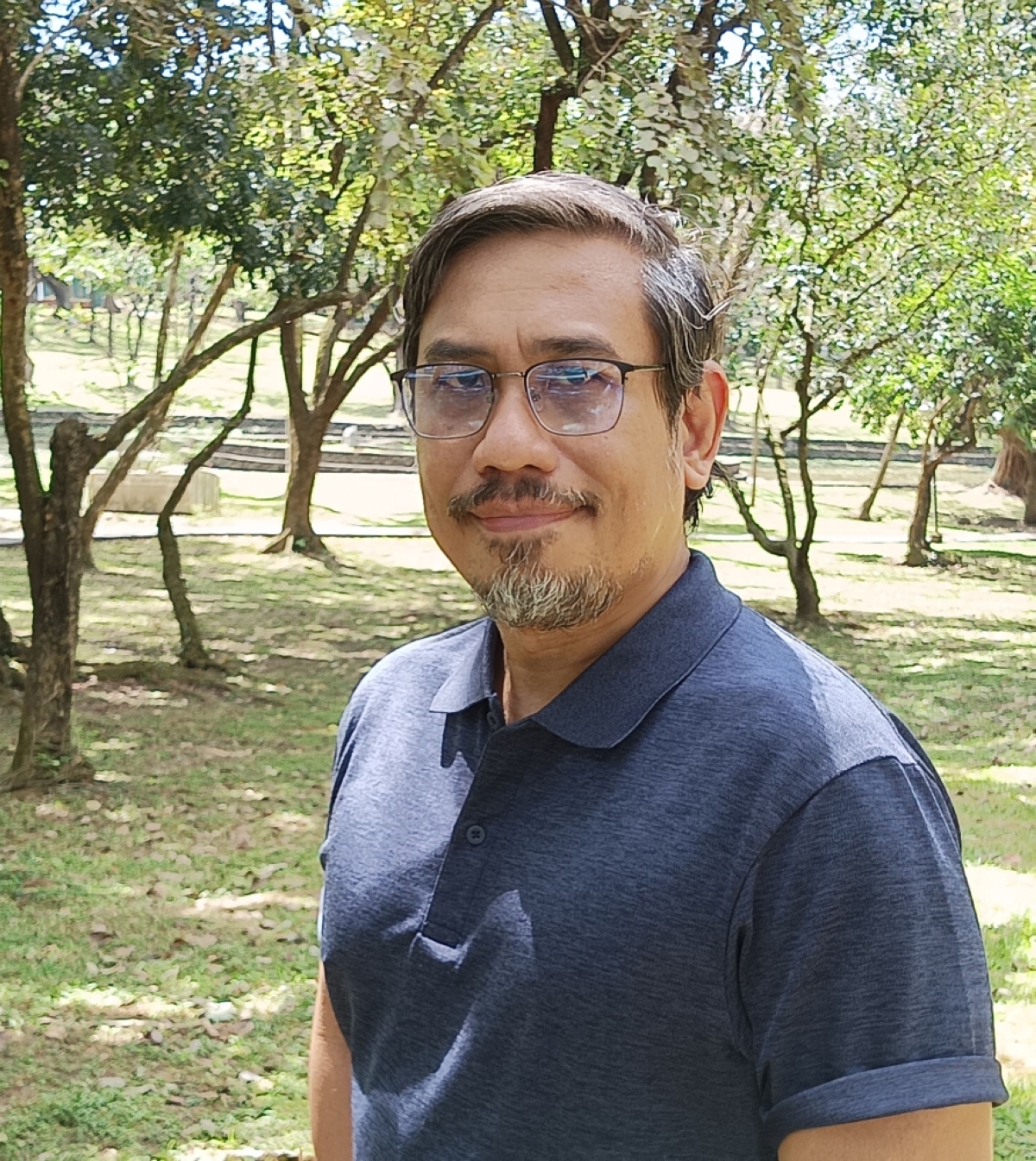Today, we are featuring comic book artist, writer, self-taught animator and short filmmaker Arnold Arre.
Arnold took up Visual Communications at the UP College of Fine Arts and graduated in 1994.

He won the National Book Awards for his graphic novels “The Mythology Class” (1999), the first to win in the comic books category, and “Trip to Tagaytay” (2000), a feature fiction short story. He also did design and illustration for San Miguel Foundation for the Performing Arts and Sony BMG Music Entertainment Philippine,s among others.
We recently had a chat with Arnold and here is that conversation.
What was it like growing up in the Arre Household? Is the whole family interested in the arts?
My father is a Mechanical Engineer and my mother is a Literature Professor, so my brothers and I learned technical skills and got exposed to the arts at an early age.
My oldest brother is the one who could draw well when we were kids and I would always copy his drawings. Years later, he lost interest in art and fell in love with math and science. My younger brother, meanwhile, pursued his interest in architecture, and so I ended up becoming the visual artist in our family.
You are a multi-disciplinary artist, but which came first?
Drawing and writing comics came first — my interest in animation only came in the 2010’s. Reading comics at an early age, I wanted to try making them. I’d translate all the movies I watched into comics, doing my best to remember each scene so that I could draw them. This was in the 70’s when there was still no internet, and we also didn’t own a VCR. Necessity is the mother of invention so I guess the desire to re-experience the movies I watched eventually led me to honing myn skills in visual storytelling.
When did you you become interested in animation?
There was a time a few years ago when I got interested in filmmaking. During that time, I learned how to use editing software. One day, I wondered-what if I make my drawings move? I thought it would be a great way to make movies. I didn’t even have to shoot any footage, I could just draw like I usually do in my comics, make little adjustments for each frame, hit “render” and watch the drawings move. It was like a eureka moment for me. I didn’t have to teach myself much because I already had a lot of experience in telling stories through sequential art so it was just a matter of doing the same thing, but in a different medium.
Komiks genre is a long tradition in the Philippines, how has this tradition influenced you?
Like most kids of my generation, I grew up reading comics and being amazed at the way a story can be told through drawings and words. Unfortunately, there weren’t a lot of local komiks that I could get hold of. I’ve heard of artists like Nestor Redondo but sadly I couldn’t find any of their works when I was growing up (this was in the late 70’s and early 80’s). The only readily available ones were comics by Marvel and DC, and European comics.
Sometimes I wonder what kind of an artist I would’ve been if I was influenced by the Golden Age masters of Filipino komiks. It’s sad but I didn’t have a choice. But even then, I’ve always wanted to write stories that promote and uplift Filipino culture. Today, unlike during my time, kids now have access to many more titles of locally made comics and I’m glad that I’m able to contribute to that.
How did the idea of “The Mythology Class” come to you? Can you share more about the latest in the series, “The Children of Bathala?”
I have been fascinated with Philippine mythology since I was a kid, from when I saw a sculpture of a creature I had never seen before (which I later found out was a “Tikbalang”). Years later, in college, I read F. Landa Jocano’s and Maximo Ramos’ books, and “The Soul Book” which to me, opened the doors to a whole new world of magical traditional folk tales.
The late 90’s was a time when huge, intricate shopping complexes began sprouting up in Metro Manila. I wondered, what if I create a story involving mythical forest-dwelling creatures and have them run around in a modern, urban setting? I wanted to play on the contrast between fantasy and technology and thought, what better way to do that than have the legendary beings interact with humans in a high-tech world. And with that as an underlying theme of “The Mythology Class,’ the marriage and harmony between the two are showcased, represented by main characters Kubin, a warrior who came straight from folklore, and Nicole, a child of the modern age.
“The Mythology Class” was also inspired by my college friends and our good times in school, the University of the Philippines, so the characters in the book are based on them. There are also a lot of homages to UP in my books.
Having attended reunions in recent years, I observed how our lives have changed as we grew older. With that in mind, I had the idea to make the sequel series, “The Children of Bathala” was released just last month, and in this adventure, bigger stakes awit the gang, including an encounter with deadliest creatures in Philippine myth, the Bakunawa.
What is your creative process like, specially for your graphic novels?
The overall concept of the story comes first, and then characters are developed along with how they will overcome the challenges within the story. Good drama is a result of these characters struggling and doing their best despite the odds being stacked against them. Next, I will make an outline which will help me flesh out the details. This is not set in stone however since sometimes I jump straight in and draw several pages of scenes playing out in my head. The final phase would be to tie all these scenes together. I’ll then do a read-through and make tweaks here and there until I feel that everything fits well.

